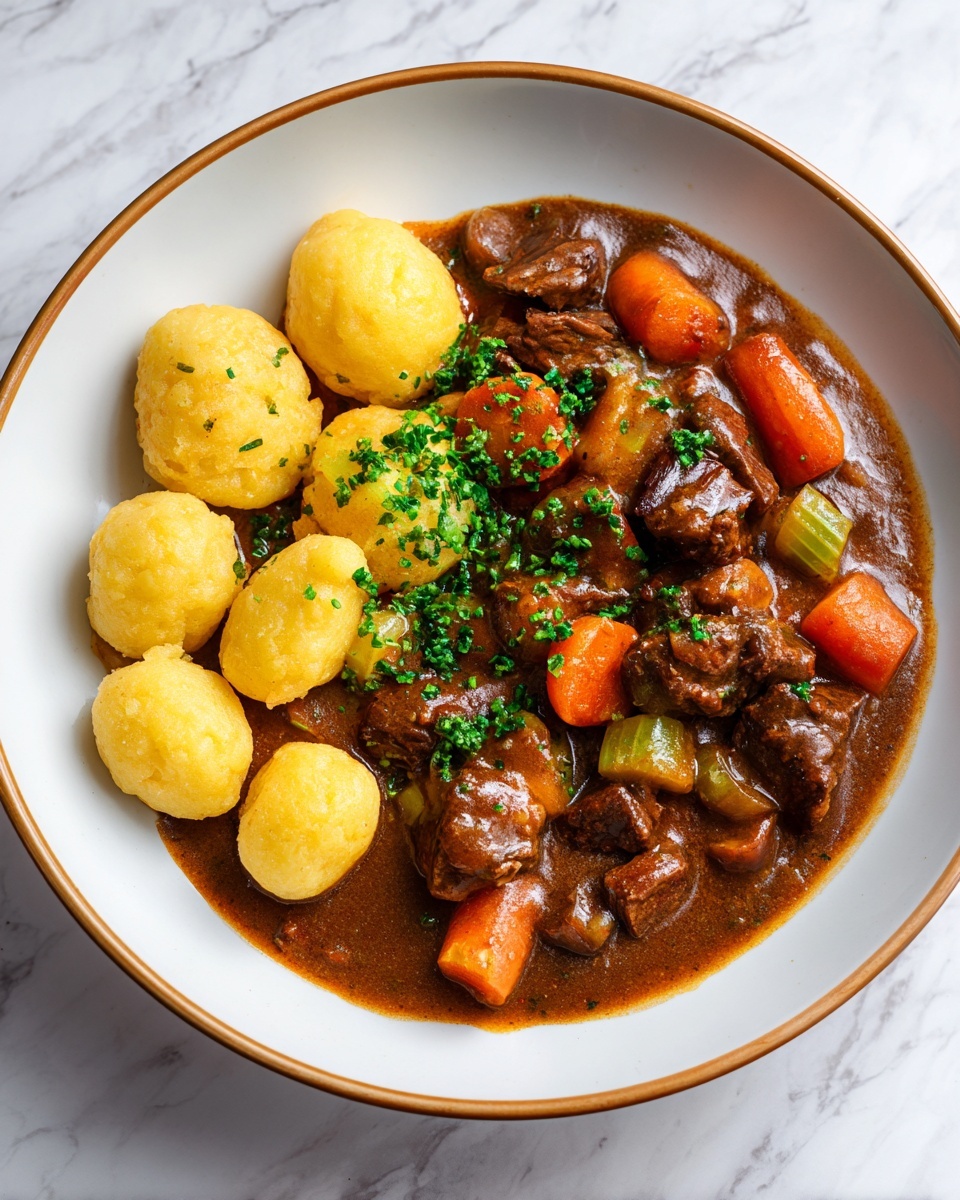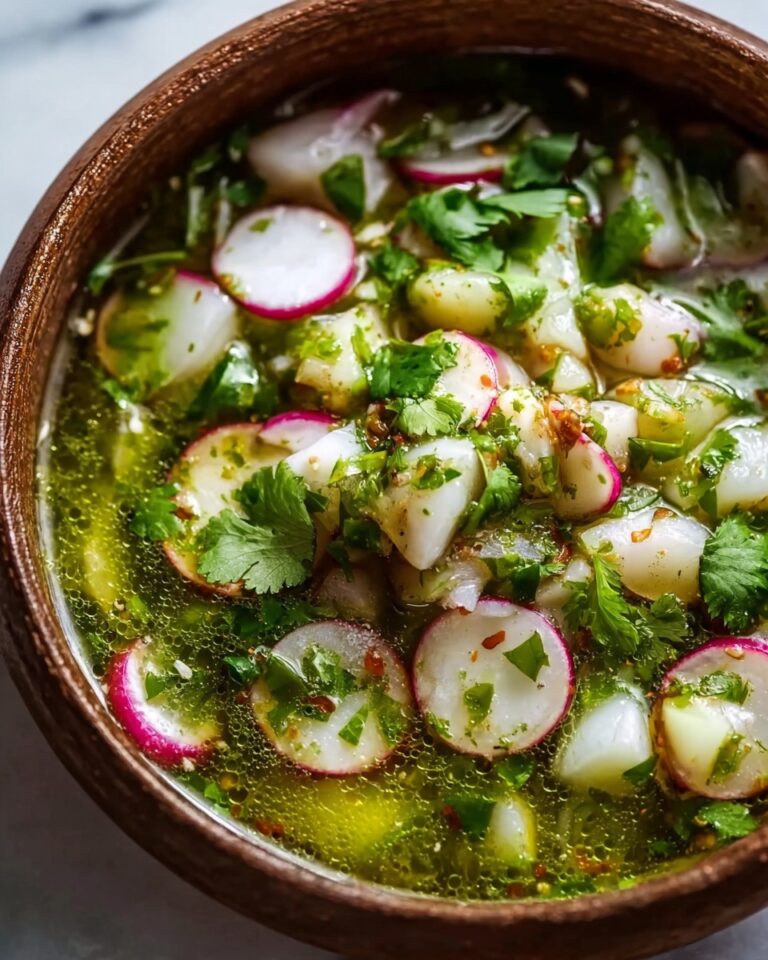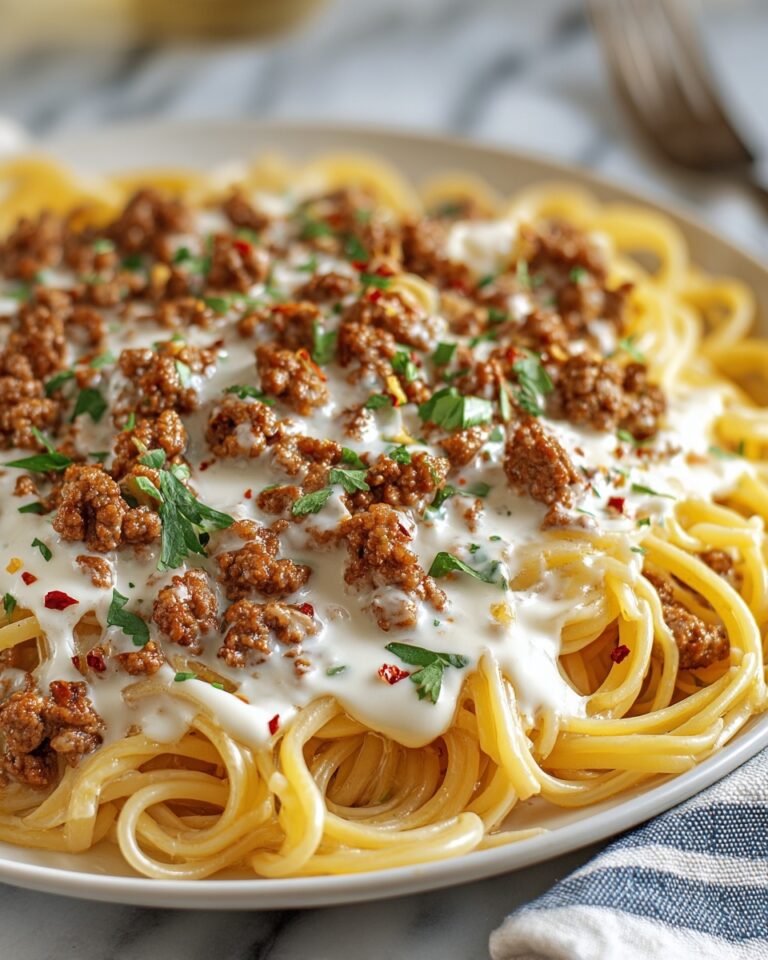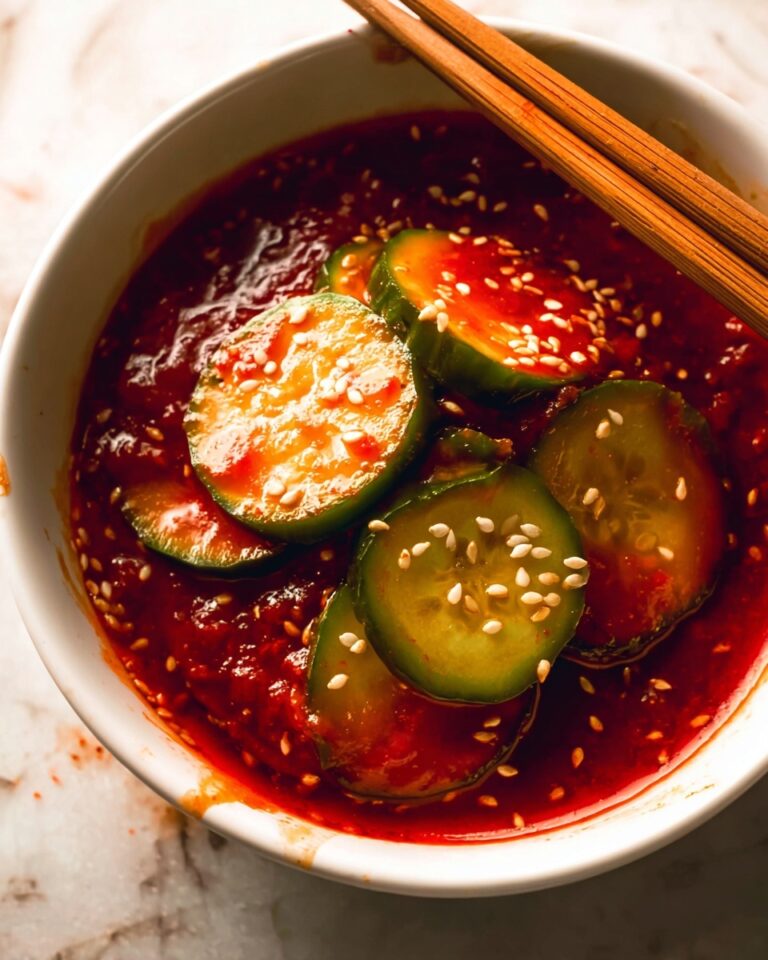If you are looking for a hearty and soul-warming dish that brings together robust flavors and tender beef in a rich sauce, you have to try this German Goulash Recipe. This traditional dish captures the essence of German cooking with its perfect balance of paprika-spiced beef, caramelized onions, and a comforting blend of herbs and spices. Every bite delivers deep, savory satisfaction, making it an ideal meal for family dinners or cozy gatherings. Once you dive into this stew’s luscious texture and warm spices, you’ll understand why it’s a beloved classic that deserves a spot in your culinary repertoire.
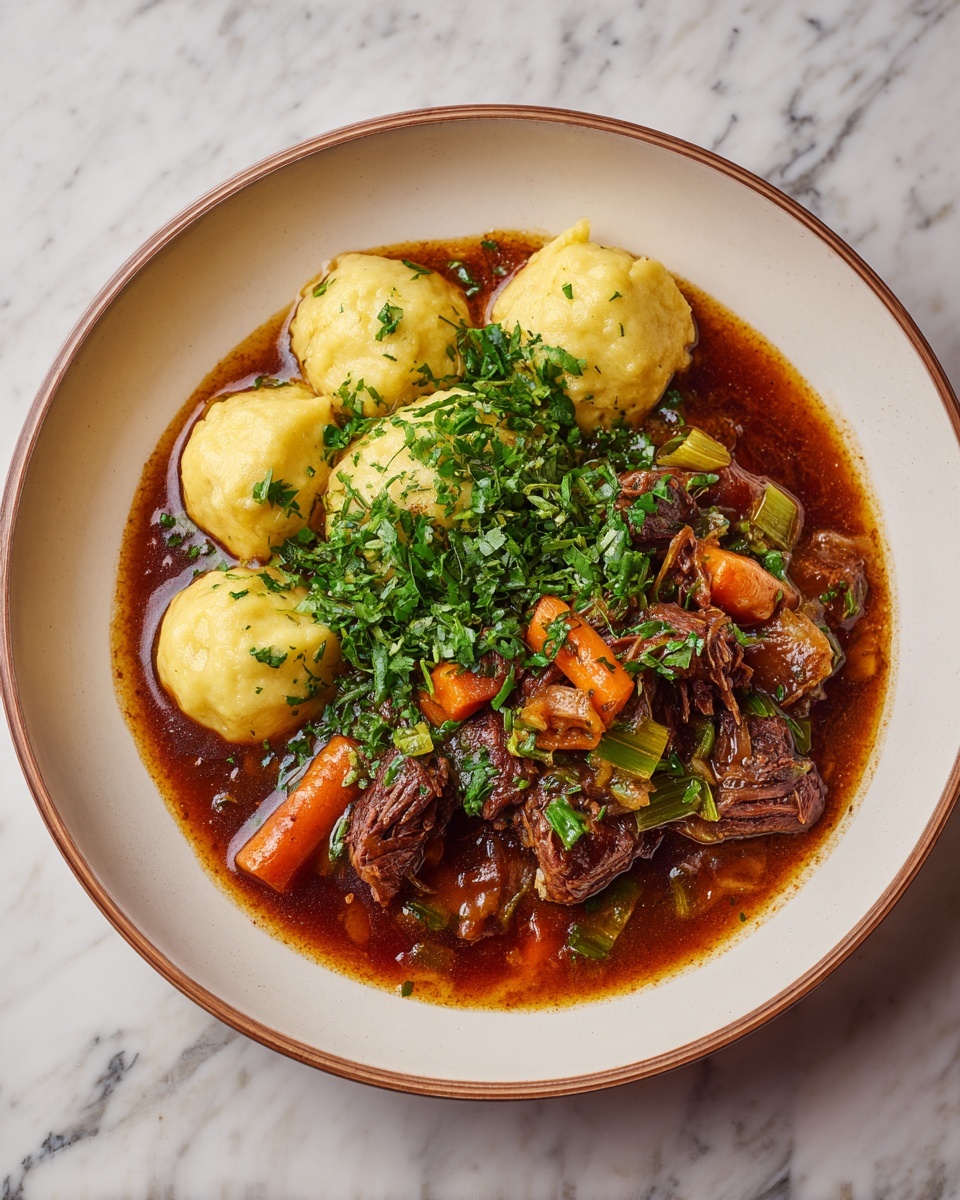
Ingredients You’ll Need
The magic of this German Goulash Recipe lies in its thoughtfully chosen ingredients. Each item is simple yet brings essential flavor or texture to the table, ensuring a perfectly balanced and richly satisfying stew.
- Vegetable oil: Provides the perfect medium for browning the beef and sautéing the onions, infusing the dish with a subtle richness.
- Beef chuck: The ideal cut for stewing, offering tenderness and flavor as it slowly braises to fork-tender perfection.
- Yellow onions: Slowly caramelized to bring a natural sweetness that complements the smoky paprika and savory broth.
- Garlic: Adds aromatic depth and a gentle punch to the overall flavor profile.
- Tomato paste: Concentrates umami and adds a beautiful, rich color to the sauce.
- Sweet paprika: The cornerstone spice in this dish, offering warmth and a signature German touch.
- Hot paprika (optional): For those who like a bit of heat and complexity.
- Caraway seeds: Deliver a subtle, earthy accent that pairs beautifully with the meat.
- Dried marjoram: Adds delicate herbal notes that brighten the stew without overpowering it.
- Salt and black pepper: Essential for seasoning and enhancing all the natural flavors.
- Flour: Helps thicken the sauce for that classic goulash consistency.
- Beef broth: Creates the savory base that the beef slowly melds with during simmering.
- Dry red wine (optional): Adds depth and richness, lifting the sauce with subtle fruitiness.
- Bay leaves: Impart a mild, aromatic layer that deepens the flavor complexity.
- Red wine vinegar: Just a touch for brightness and balance at the end of cooking.
- Fresh parsley (garnish): Adds a fresh, vibrant finish to this hearty, comforting stew.
How to Make German Goulash Recipe
Step 1: Brown the Beef
Start by heating the vegetable oil in a heavy-bottomed pot or Dutch oven. Brown the beef cubes in batches over medium-high heat, turning them so they develop a beautiful, caramelized crust. This caramelization is key because it locks in flavor and forms the savory foundation of your goulash. Once browned, transfer the beef to a plate and set aside.
Step 2: Sauté the Onions
In the same pot, add the finely chopped yellow onions. Let them cook slowly until they achieve a rich golden brown color, about 10 minutes. This step is crucial for building your dish’s sweetness and depth. The onions transform from sharp and crunchy to soft and naturally sweet, melting perfectly into the stew later.
Step 3: Add Garlic and Tomato Paste
Stir in the minced garlic and tomato paste, cooking for another two minutes. The garlic wakes up the flavors, and the tomato paste intensifies the sauce’s natural richness, giving the dish its celebrated vibrant hue and thick texture.
Step 4: Season with Paprika and Spices
Sprinkle in the sweet paprika along with hot paprika if you like a bit of spice, plus the caraway seeds, dried marjoram, salt, and pepper. Stir everything together well so that the onions and garlic are completely coated, releasing their combined aromas. This spice blend is what sets the German goulash apart from other stews, delivering a distinct, comforting character.
Step 5: Thicken and Combine
Sprinkle the flour over the mixture and cook for about one minute, stirring constantly. This step lets the flour cook out, preventing any raw taste while thickening the stew beautifully. Then, return the browned beef to the pot and pour in the beef broth and dry red wine, if you’re using it. Add the bay leaves for their subtle, fragrant contribution.
Step 6: Simmer to Perfection
Bring the pot to a boil, then reduce the heat to low and cover. Let it simmer gently for two to two and a half hours, or until the beef is insanely tender and the flavors have melded into a luscious, thick sauce. This slow cooking melds all the ingredients into the unmistakable richness of a traditional German Goulash Recipe.
Step 7: Final Touches
Once the meat is tender, stir in the red wine vinegar to brighten the flavors and balance the rich sauce. Adjust seasoning to your preference, removing the bay leaves before serving. This last touch ensures your goulash finishes with a subtle zing that delights with every bite.
How to Serve German Goulash Recipe
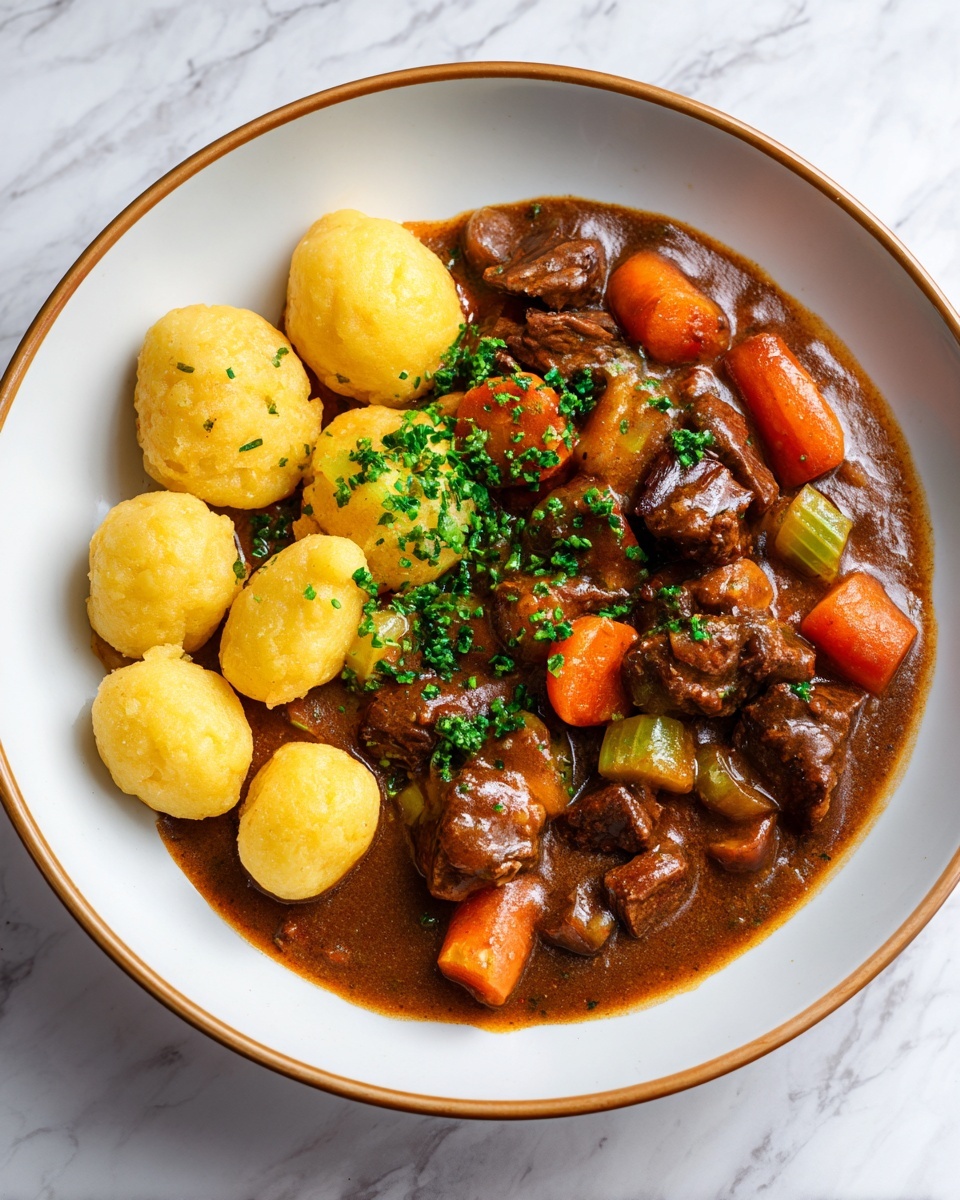
Garnishes
A sprinkle of freshly chopped parsley just before serving adds a lovely pop of color and fresh herbal notes. It brightens the deep, rich flavors of the goulash and makes your plate look irresistible. You can’t go wrong with this simple but effective garnish!
Side Dishes
Traditional German goulash is fantastic served over soft egg noodles, enabling the sauce to soak into every strand. Alternatively, creamy mashed potatoes make a luscious bed for the beef and sauce. If you’re feeling adventurous, try spaetzle for an authentic German touch — its light, chewy texture is perfect for soaking up all the juices.
Creative Ways to Present
For a rustic and hearty presentation, serve the goulash in individual cast-iron skillets or shallow bowls. Top each portion with extra parsley and a dollop of sour cream to add a silky richness. You can also accompany the dish with crusty bread on the side for dipping into the sauce. This makes it perfect for casual dinners or impressing guests with a warm, comforting European classic.
Make Ahead and Storage
Storing Leftovers
German goulash tastes even better the next day as the flavors have more time to meld. Store leftovers in an airtight container in the refrigerator, where it will keep delicious for up to 3 days. Just be sure to cool the stew completely before refrigerating to preserve its texture and taste.
Freezing
This hearty stew freezes beautifully, making it a perfect make-ahead meal. Transfer cooled goulash into freezer-safe containers or bags, removing as much air as possible. It can be frozen for up to 3 months without losing its rich flavor and tender texture. When ready to eat, thaw it overnight in the fridge for best results.
Reheating
Reheat gently over low heat on the stove, stirring occasionally until warmed through. Alternatively, microwave in short intervals, stirring in between for even heat. If the sauce thickened up too much in the fridge, just add a splash of beef broth or water to loosen the consistency.
FAQs
Can I substitute pork for beef in this German Goulash Recipe?
Absolutely! Pork works well as a substitute if you prefer a slightly lighter flavor. Just adjust the cooking time as pork can cook faster than beef, and make sure to brown it well for maximum flavor.
Is it necessary to use red wine in the recipe?
Not at all—red wine is optional and adds a lovely depth and complexity, but you can omit it without sacrificing the essence of the dish. Simply replace it with extra beef broth for a rich, comforting taste.
How can I make the sauce thicker?
For a thicker sauce, cook the goulash uncovered for the last 30 minutes of simmering to allow some liquid to evaporate. You can also slightly increase the flour amount during the thickening step for a more robust gravy consistency.
Is this dish gluten-free?
This recipe can be gluten-free if you use gluten-free flour and confirm that your beef broth is gluten-free. Otherwise, you can choose cornstarch or another thickening agent to avoid gluten altogether.
What is the best way to reheat leftover goulash without drying it out?
Reheat gently on low heat or in the microwave in short bursts, stirring frequently. Adding a little broth or water before reheating helps maintain the sauce’s moisture and keeps the beef tender and juicy.
Final Thoughts
This German Goulash Recipe is a true comfort food treasure, marrying simple ingredients with soulful, aromatic spices to create a truly unforgettable meal. Whether for weeknight dinners or special occasions, this dish invites warmth and satisfaction into your kitchen. Give it a try—you might just find your new favorite way to enjoy classic German flavors!

